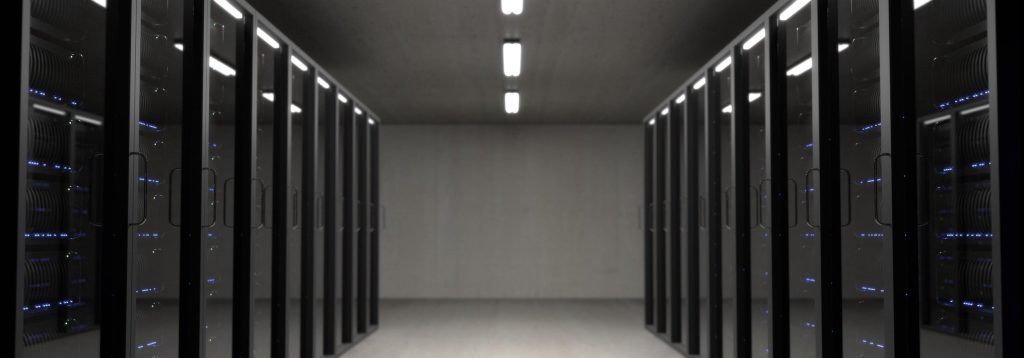R. Stephen Spinazzola, PE, LEED AP
Shumate Engineering, PLLC

Our understanding of electromagnetic pulse energy in its many forms and permutations has been around since we have studied and understood lightning. The energy emitted is more than the electric charge, and there is an accompanying magnetic pulse that can cause damage as well.
“An electromagnetic pulse (EMP), also sometimes called a transient electromagnetic disturbance, is a short burst of electromagnetic energy. Such a pulse’s origin may be a natural occurrence or human-made, and can occur as a radiated, electric, or magnetic field or a conducted electric current, depending on the source. EMP interference is generally disruptive or damaging to electronic equipment, and at higher energy levels a powerful EMP event such as a lightning strike can damage physical objects such as buildings and aircraft structures”.
EMPs are also the result of a nuclear explosion. It has long been feared by our government that a foreign or domestic terrorist could detonate a nuclear device and—along with the vast destruction caused by the explosion—unleash an EMP with a significant reach. The EMP renders all micro-electronic devises useless, and virtually unrepairable. Computers, mobile phones, watches, TV’s; everything with micro-electronics would be rendered effectively useless.
The biggest risk we are facing as a country is the detonation of a high altitude thermo-nuclear device, or HEMP. A nuclear weapon detonated approximately 250 miles above Kansas City would destroy most of the electronics that are not protected in the entire continental United States.
EMP Protection: The level and size of EMP protection can range from protecting a single device to an entire building. The focus of this paper is the impact on mission critical facilities either as part of a building, or the entire building.
EMP and its Use in Spy Craft: For decades, eavesdropping on telecommunications by listening to the low level EMP emitted from telephony and other IT equipment has been used as a form of signal intelligence. And—knowing that our adversaries have the same capability—we developed a method to shield our electronic communications, called TEMPEST (Telecommunications Electronics Materials Protected from Emanating Spurious Transmissions). TEMPEST addresses spying and being spied upon. Providing security against being spied upon is TEMPEST shielding. This form of shielding is the precursor to the subject of this paper: the impact of EMP on our critical national infrastructure, specifically data centers.
As previously discussed, one of our main concerns this country has is the detonation of a HEMP. EMP or HEMP does not impair the operation of medium and high voltage equipment apart from relay and control circuits on movable and fixed assets. If the relay and control circuits are exposed to EMP, they will be effectively destroyed.
This raises questions: who does this affect, and what needs to be done to address it?
“The US government in Executive Order 13865 of March 26, 2019 states the following: It is the policy of the United States to prepare for the effects of EMPs through targeted approaches that coordinate whole-of-government activities and encourage private-sector engagement.”
“Recognizing that EMP presents a strategic threat to the nation, DHS continues to plan and execute on the President’s and Congress’s intent of sustainable, efficient, and cost-effective approaches to EMP mitigation. DHS will ensure collaboration across all relevant parties, continue to identify where the EMP threat presents the greatest risk to critical infrastructure, and focus efforts to ensure public and private sector mitigation efforts are scientifically based and have traceable reductions in the risk related to EMP”.
The National Coordination Center for Communications (NCC) issued February 5th, 2019 Electromagnetic Pulse (EMP) Protection and Resilience Guidelines for Critical Infrastructure and Equipment (the Executive Overview is attached, this is a lengthy document and required reading to fully comprehend specific applications for each industry). “This document provides guidelines to assist federal, state, and local officials and critical infrastructure owners and operators to protect mission essential equipment against electromagnetic pulse (EMP) threats. It was created to help fulfill the Secretary of Homeland Security’s responsibilities.”
The Department of Homeland Security issued an update in April 2019 (see attached Executive Overview from the document) defining what National Critical Functions are covered by the executive order as defined below.
“National Critical Functions: The functions of government and the private sector are so vital to the United States that their disruption, corruption, or dysfunction would have a debilitating effect on security, national economic security, national public health and safety, or any combination thereof.”
And on August 17, 2020, the Department of Homeland Security issued a status report on the investigation into and implementation of EMP protection of critical national infrastructure. And in their report, they offered the following conclusion.
“Recognizing that EMP presents a strategic threat to the nation, DHS continues to plan and execute on the President’s and Congress’s intent of sustainable, efficient, and cost-effective approaches to EMP mitigation. DHS will ensure collaboration across all relevant parties, continue to identify where the EMP threat presents the greatest risk to critical infrastructure, and focus efforts to ensure public and private sector mitigation efforts are scientifically based and have traceable reductions in the risk related to EMP.”
If national critical functions are housed in your data center, then the facility must meet the requirements of the executive order discussed above. Regardless of whether it is a new or existing new data center the facility will need to be designed and built to mitigate the effects of an EMP as defined in the executive order. An example of how and where EMP protection is required is at electric grid transmission control facilities.
Understanding the Electric Grid in the United States: The electric grid in is divided into three main areas: east of the Mississippi river, west of the Mississippi river, and Texas. Within each of the three major grids, there are a significant number of sub-grids.
There are three components of each grid: generation (coal, hydro, nuclear, natural gas), transmission (high voltage above 100 KV), and distribution (usually below 35 KV).
As of the writing of this paper, I have been part of a design team doing a study on how to make a utility company transmission control center EMP protected. The decision-making process to define the size of the room needed for the control center included: defining the number of required seats, the number of monitors at each seat, and the number of large wall mounted screens that would be in the room.
HEMP Protection Methods: One of the main hurdles in designing an EMP protected space or building is making the cooling plant heat rejecting equipment survive an EMP event. Regardless of whether it is cooling towers, dry coolers, or hybrid coolers, all the low voltage equipment and associated relays must either be protected at the device or moved inside the EMP protected structure.
It is incumbent upon each owner/user of systems to meet the requirements for EMP protection based on their category as defined in the executive order. Attached is the executive summary for the Electromagnetic Pulse (EMP) Protection and Resilience Guidelines for Critical Infrastructure and Equipment.
At the building level, EMP protection generally consists of concrete with additives and/or wire mesh imbedded in the concrete. These approaches are currently being deployed at facilities requiring EMP protection.
There are two components to attenuating any energy source: the energy intensity, and the specific wavelength. The attached guidelines dictate the level of attenuation required, and at what wavelength.
The guide defines four levels of EMP shielding, as well as identifying: the outage time and recovery time from an EMP event, the attenuation of shielding measured in dB, and the wavelength up to 10 MHZ. The associated cost for each level increases significantly from level 1 to level 4. Identifying what level of EMP protection you need is paramount in the scale and cost of your installation.
The following diagram (courtesy of National Institute of Building Sciences) illustrates the key elements in HEMP protection: the use of wave guide hall design, special doors and hardware, honeycomb metal to attenuate HEMP and maintain air movement, electromagnetic shielding, HEMP filtering on incoming electric and telecom services, and proper surge protection and enhanced grounding. There is a wide selection of EMP protection scenarios based on the application.
In general, it is advisable to have a plan that addresses the following steps:
Appropriate Redundancy: In addition to having the facility HEMP protected, having spare components needs to be a part of a comprehensive plan.
Dispersal and Relocation: Have mission critical components and staff in different locations to diminish risk.
Resourcefulness: Situational awareness and critical thinking is key for staff in mission critical facilities.
Planning and Recovery: The recovery plan must be written and tested for a seamless operation in the event of a HEMP.
Protection in Depth: PID provides layers of hardening that will involve multiple construction trades and operational staff to provide the best protection.
A relatively new product on the market for blocking EMP is graphene.
“Graphene is an allotrope of carbon consisting of a single layer of atoms arranged in a two-dimensional honeycomb lattice. The name is a portmanteau of “graphite” and the suffix-ene, reflecting the fact that the graphite allotrope of carbon consists of stacked graphene layers. Each atom in a graphene sheet is connected to its three nearest neighbors by a σ-bond, and contributes one electron to a conduction band that extends over the whole sheet. This is the same type of bonding seen in carbon nanotubes and polycyclic aromatic hydrocarbons, and (partially) in fullerenes and glassy carbon.”
Products utilizing graphene are available as paint and sheets of various thicknesses and can provide EMP protection when deployed as part of a comprehensive solution.
Summary
In conclusion, we have observed facilities that are being designed to meet this requirement. As this information is project confidential, we are not able to share specific projects deploying EMP protection as defined in this paper.
Do your homework. Obtain and read the referenced documents. This paper addresses the issues at a high level and provides a blueprint for action.
The first step is to determine if your facility houses National Critical Functions. If it does, then an implementation plan must be developed to mitigate the risk. The plan must be reviewed by the stakeholders to ensure everyone is on board with the HEMP mitigation plan. It then must be implemented to address the steps defined in the WBDG HEMP Effects and Protection referenced (this document is for all US government agencies and is included as a general guide for design).
References
References 1, 2, 5, 6, and 7 and are not attached due to copyright and/ or size of the document.
Title 3, The President Executive Order 13865 of March 26, 2019 Coordinating National Resilience to Electromagnetic Pulses
Electromagnetic Pulse (EMP) Protection and Resilience Guidelines for Critical Infrastructure and Equipment, February 5th, 2019, Version 2.2.
CISA-April 2019, National Critical Functions Set
Electromagnetic Pulse (EMP) Program Status Report, August 17, 2020
Whole Building Design Guide National Institute of Building Sciences: Innovative Solutions for the Built Environment
Attachments
Reference 3 above, cover, Executive Order, Table 1. Four EMP Protection Levels for Infrastructure and equipment.


